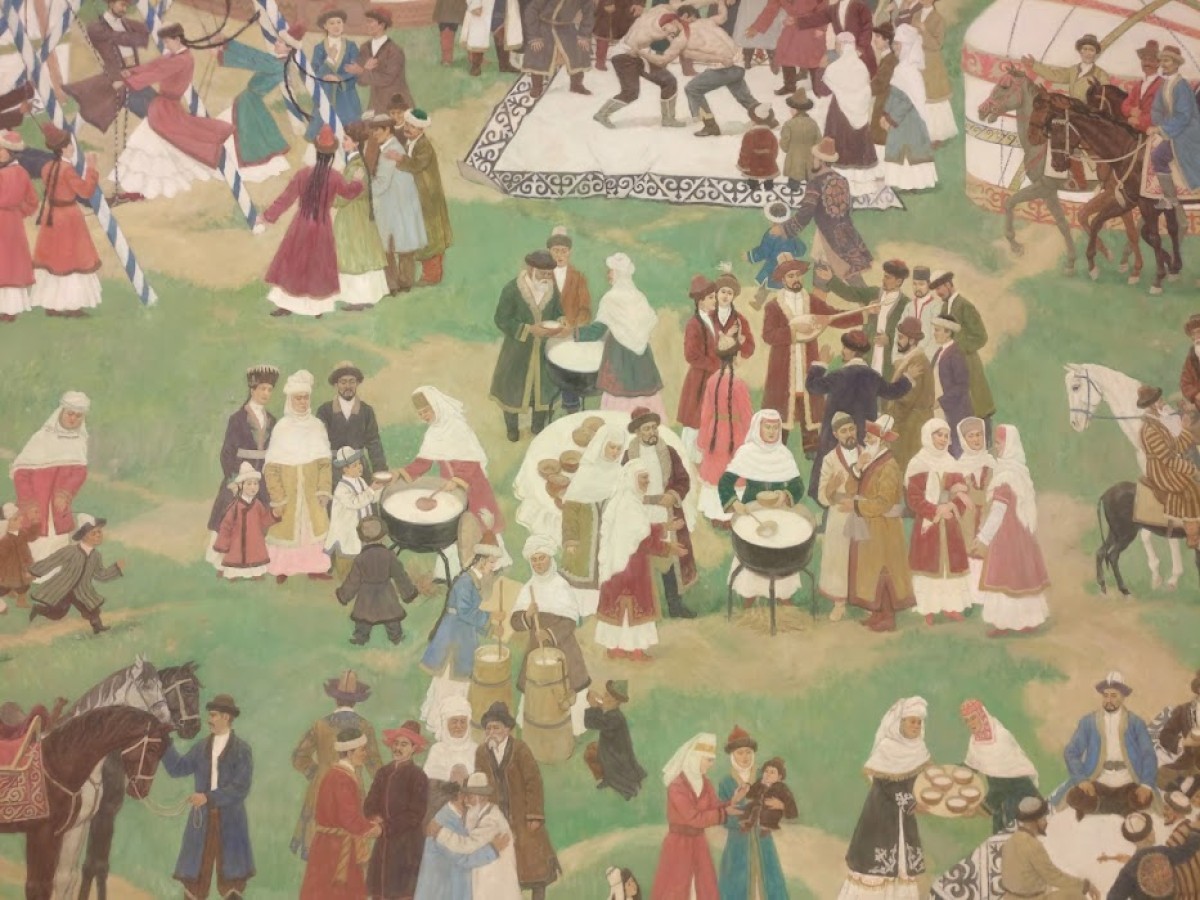
Nauryz, also known as the Persian New Year or the Central Asian Spring Festival, is an ancient holiday that has been celebrated for over 5,000 years in Central Asia, including Kazakhstan, Kyrgyzstan, Turkmenistan, Uzbekistan, and other countries in the region. It falls on March 21st or 22nd each year and marks the beginning of spring and the renewal of nature.
Nauryz has its roots in ancient Zoroastrianism, a pre-Islamic religion that was practiced in Persia (modern-day Iran) and spread to Central Asia around 1,500 years ago. In Zoroastrianism, the vernal equinox (the day when the length of day and night are equal) was considered a time of rebirth and renewal, and was celebrated as the first day of the New Year.
The holiday was also adopted by the nomadic tribes of Central Asia, who relied on the changing seasons and the movement of the sun and stars for their survival. Nauryz was a time to welcome the new season, give thanks for the previous year's harvest, and pray for good weather and a bountiful crop in the year ahead.
History of “Nauryz kozhe”
The origins of Nauryz kozhe can be traced back to the Zoroastrian tradition, which was practiced in Persia (modern-day Iran) and later spread to Central Asia. According to this tradition, Nauryz was celebrated as the first day of the New Year, and a special dish was prepared using seven ingredients, each representing a different attribute, such as strength, health, and wisdom.
Over time, Nauryz kozhe evolved and became a popular dish in Central Asia, with each region and family adding their own unique twist and variation to the recipe. In Kazakhstan, Nauryz kozhe is typically made using seven ingredients, including meat (usually lamb or beef), grains (such as wheat or rice), and milk.
The dish is prepared by first soaking the grains in water and boiling them until they are soft. The meat is then cooked separately and added to the pot along with the grains, and the mixture is simmered until it thickens. Milk and other ingredients, such as onions, carrots, and spices, are added to give the dish its distinctive flavor.
Nauryz kozhe is usually served hot and is a symbol of unity and togetherness, as it is often shared with family, friends, and neighbors during Nauryz celebrations. The dish is also considered to be a symbol of prosperity and abundance, as the seven ingredients represent the seven days of the week and the abundance of blessings that are hoped for in the coming year.
Celebrations of Nauryz:
Nauryz is a time of joy and celebration, and people across Central Asia mark the occasion with a variety of customs and traditions. The holiday typically lasts for three days, during which people clean their homes, dress in new clothes, and prepare traditional foods and drinks
According to esoteric knowledge, on March 21, a portal will open and 362 aulie will descend to earth for a holiday. March 22 is the day of the vernal equinox, which marks the beginning of spring in the Northern Hemisphere. During the vernal equinox, the tilt of the Earth's axis is neither towards nor away from the sun, which means that day and night are roughly equal in length all over the world. This phenomenon occurs twice a year, in March and September, and is known as an equinox.
Another popular Nauryz tradition is the playing of traditional games and sports, such as horse racing, wrestling, and tug-of-war. People also gather to sing and dance, and there are often musical performances and cultural festivals held during the holiday.
Nauryz is a time for families and friends to come together, share meals, and exchange gifts. It is also a time to reach out to those who are less fortunate, and many people make charitable donations or perform acts of kindness during the holiday.
Conclusion:
Nauryz is a rich and colorful holiday that reflects the deep cultural traditions of Central Asia. It celebrates the arrival of spring, the renewal of nature, and the hope for a bountiful year ahead. The holiday is an important reminder of the values of family, community, and compassion, and it continues to be a cherished part of the cultural heritage of the region.
Dulati Kanat

